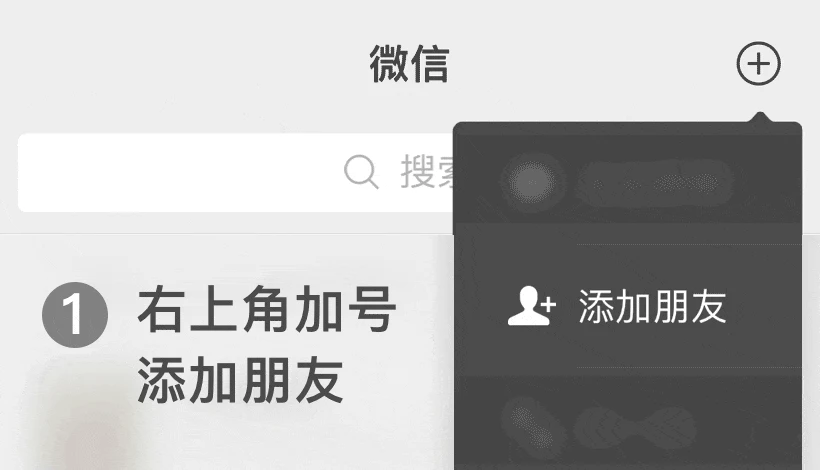
 Professional services are guaranteed
Professional services are guaranteed One on one full process guidance
One on one full process guidance Efficient and fast experience
Efficient and fast experience1. System composition and core elements
The integrated management system of digitalization and industrialization is based on "data-driven and capacity building", covering the entire process of enterprise strategy, business, technology, and management, and includes the following key elements:
? Technology integration: such as the integration of industrial automation and information technology, promoting intelligent manufacturing (such as CNC machine tools, smart factories).
? Product integration: Enhance product added value by embedding information technology (such as smart home appliances, industrial robots).
? Business optimization: Utilize information technology tools to reconstruct R&D, production, supply chain and other links, achieving process standardization and efficiency improvement.
? Industrial derivation: it expedites the emergence of industrial Internet, industrial software and other emerging industries, forming a new ecological environment of digital economy.
The management system follows nine principles, including "focusing on obtaining sustainable competitive advantages" and "global optimization and collaborative innovation", emphasizing the achievement of strategic goals through systematic methods.
2. Standardization grading and capacity building
The integration of digitalization and industrialization is divided into levels such as A (initial level), AA (unit level), AAA (domain level), etc. AAA level is the highest certification, requiring enterprises to achieve digital collaboration across the entire business chain. Core competencies include:
? Data connectivity capability: Connect internal data flows within the enterprise to support real-time decision-making;
? Value creation capability: Achieve cost reduction, efficiency improvement, and business model innovation through digital transformation.
According to the 2.0 version of the integration management system, new capabilities are divided into five levels, from basic to advanced, as follows:

(I.) Basic admission conditions
1. Enterprise qualifications
An independent legal entity registered in the application area (such as province or city) with good financial condition and no serious record of dishonesty.
Give priority to support manufacturing and producer services (such as intelligent manufacturing and industrial Internet).
2. Fundamentals of Integration of Informatization and Industrialization
We have carried out the integration practice of informatization and industrialization, and achieved initial results in digital construction (such as the application of ERP, MES and other systems).
There is a clear need to establish a dual integration management system and voluntarily participate in the implementation of standards.
3. Management system experience
We have established and implemented other management systems (such as quality, environmental, and energy management systems) and have experience in operating these systems.
(II.) Information technology capability and investment requirements
1. Information system construction
It is necessary to have an information system that matches the business process (such as ERP, MES, PLM, etc.) and achieve data connectivity in key links.
Ideally, an industrial control system (such as a device interconnection platform) should be available.
2. Financial investment guarantee
In the past two years, there has been continuous investment in information technology and industrialization (including equipment procurement, system development, training, etc.), and it is recommended to accumulate no less than 200000 yuan.
Enterprises need to commit to continuous investment in the future to maintain capacity building.
3. Information security measures
Equipped with information system security protection mechanisms, such as encryption measures deployed in independent computer rooms or in the cloud.
(III.) Grading evaluation criteria
The integration certification of industrialization and informatization is divided into A-level (initial level), AA level (unit level), AAA level (process level), etc. Different levels need to meet the following ability requirements:
? A-level (Initial Level)
Preliminary application of basic information systems such as office and finance;
Having a project management mechanism and an experience driven management model.
? AA level (unit level)
Implementing digital tools (ERP, MES) coverage within a single function (such as production, research and development) to enhance business efficiency;
The management mode is function driven and has a standardized process control mechanism.
? AAA level (process level)
Realize cross departmental data integration and process collaboration (such as supply chain full chain optimization);
The management mode is process driven, driven by data-driven value innovation (such as new product development).
(IV.) Application Process and Additional Requirements
Declaration Procedure
Submit application materials (including "Application Form", self-assessment report, etc.) through the local industry and information technology department, and some areas need to complete the self-assessment system for the integration of industrialization and informatization in advance( https://cspiii.com/pg ).
It needs to be reviewed by third-party evaluation agencies and evaluated by local industrial and information technology departments.
policy support
After passing the certification, one can apply for local rewards (such as a reward of 500000 yuan in Changsha and a maximum of 500000 yuan in Tianjin) and special fund support.
(V.) Precautions
Certificate is not mandatory: voluntary application for certification is not a necessary qualification for government procurement, and some regions will include it in the bonus points for bidding.
Cost and cycle: The certification fee is about 80000 to 240000 yuan, with a cycle of 3-12 months, and requires annual review.
Compliance controversy: Some experts believe that using certification as a review factor may violate the support policies for small and medium-sized enterprises, and companies need to make decisions based on their actual needs
1. Policy empowerment
Fund subsidies: priority should be given to special subsidies such as intelligent manufacturing and industrial Internet (up to 10 million);
Tax incentives: Enjoy policy dividends such as R&D additional deductions and loan interest subsidies;
Entry threshold: becoming a bonus or necessary condition for government projects and state-owned enterprise supply chain bidding.
2. Enhancing competitiveness
Cost reduction and efficiency improvement: Process integration reduces manual intervention by 40% and increases inventory turnover by 20% -30%;
Agile innovation: relying on data-driven approaches to shorten research and development cycles (such as a company transitioning from 18 months to 6 months);
Risk control: Full process data traceability, quality problem localization efficiency improved by 90%.
3. Brand value-added
Industry endorsement: Authoritative certification from the Ministry of Industry and Information Technology, enhancing customer trust and bargaining power (product premium up to 15%);
Ecological cooperation: Obtain access qualifications for top enterprise supply chains or industry alliances (such as Huawei, Haier Ecology).
4. Management upgrade
System optimization: Building a standardized management framework to break down "information silos";
Organizational collaboration: Deep integration of IT and business, increasing cross departmental collaboration efficiency by 50%;
Data monetization: Drive business growth through user profiling and predictive analysis (such as marketing conversion rate+25%).
5. Long term strategy
Clear path: Clearly define the goals of the digital transformation stage to avoid resource waste;
Carbon neutrality support: Green and intelligent manufacturing reduces energy consumption (such as -12% energy consumption in steel enterprises);
International Benchmarking: Certification standards are integrated with systems such as Germany's Industry 4.0 to facilitate global competition.
1. Basic information of the enterprise
Business license, organization code certificate and other qualification certificates.
Company profile (industry status, main business, current status of information technology construction, etc.).
Financial audit reports for the past three years (proving the stability of the company's operations).
2. Integrated Management System Documents for Industrialization and Informatization
Manual and Program Files: System documents written in accordance with the GB/T 23001-2017 standard, including:
Management Manual for Integration of Informatization and Industrialization (Overall Framework, Policy and Objectives).
Program files (such as new capability planning, data development and utilization, business process optimization, etc.).
Record files: System operation records (such as internal audit reports, management review reports, improvement measures, etc.).
3. Self evaluation report
Based on the "Self evaluation Questionnaire for Integration of Informatization and Industrialization" (such as the evaluation system of the Ministry of Industry and Information Technology), analyze the current level of integration of informatization and industrialization in enterprises.
Highlight new capabilities in the information technology environment, such as intelligent production, supply chain collaboration, data-driven decision-making, etc.
4. New materials for capacity building
Capability specification: specify the new capabilities created (such as "the fine production control capability based on industrial Internet").
Implementation plan: Technical implementation path (such as ERP/MES/PLM system integration, data center construction, etc.).
Proof of effectiveness: Quantitative indicators such as XX% improvement in production efficiency, XX% reduction in costs, and XX% reduction in order delivery cycles.
5. Development Plan for Integration of Informatization and Industrialization
The strategic goals, implementation path, and resource investment plan for the integration of the two industries in the next 3-5 years.
6. Other supporting documents
Patents, software copyrights, and award certificates (related to informatization/intelligence).
Cooperation agreements (such as cooperation documents with cloud service providers and industrial Internet platforms).
System screenshot or demonstration video (showcasing key information application scenarios).
precautions
Authenticity: To avoid any discrepancy between the material and the actual situation, traceable operation records must be provided.
Focusing on capabilities: New capabilities need to be aligned with the company's strategy, avoiding vague discussions about technology applications.
Data support: Use specific data (such as efficiency improvement rate, energy consumption reduction value) to demonstrate effectiveness.
Policy fit: refer to the key directions (such as industrial Internet, digital transformation) in the "14th Five Year Plan" for Deeply Integrated Development of Informatization and Industrializatio
The integration evaluation process of digitalization and industrialization helps enterprises accurately identify bottlenecks in digital transformation through systematic data collection, benchmarking analysis, and continuous improvement, providing scientific basis for strategic decision-making.





Wechat ID:Siterui888888
Add a wechat friend to get free plans and quotations


 Contact
Contact
號.jpg)



 定制化解決方案
定制化解決方案 專業(yè)咨詢指導
專業(yè)咨詢指導 透明化服務(wù)
透明化服務(wù) 長期顧問式合作
長期顧問式合作